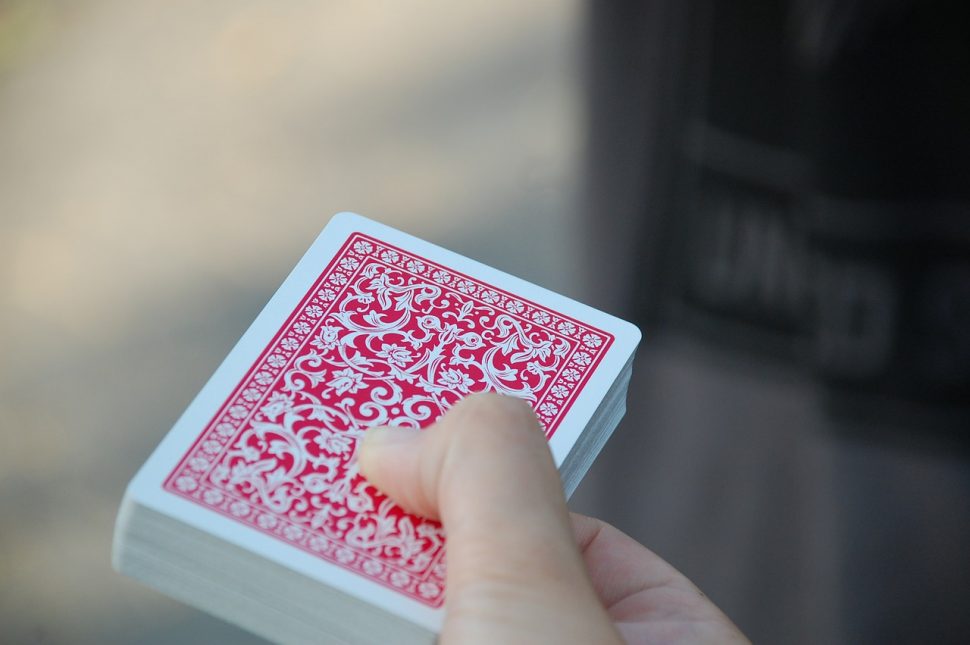Show Me Your Cards: Design Decks in EdTech

Be it in form of physical deck sets, printable PDFs or mobile apps, cards are a popular design tools. Wölfel & Merritt (2013), describe them as simple, tangible and easy to manipulate. Roy & Warren (2019) state an upsurge post-2000 when numerous card decks were
developed to aid creativity and user participation. Design cards can support different phases of a design process, from initial ideation through ongoing development towards evaluation of design concepts (Lucero et al., 2016).
Whether you are contemplating the use of an existing card deck or plan to develop a custom set for your context, consider the following dimensions of card design (Wölfel & Merritt, 2013):
- Purpose & Scope: While some card sets have a specific purpose and focus on a particular context, others are general creativity tools.
- Duration & Timing: Card sets require different time investments and are optimized for specific points in time during the design process.
- Method: Some card sets are highly flexible, whereas others provide a strict rulebook.
- Customization: Card sets vary in the level of customization they allow for, encourage or require.
- Formal Qualities: Card sets differ in size, shape, use of text and images as well as their implementation (e.g., connection to apps or websites).
Roy & Warren (2019) list the following advantages and disadvantages of card sets:
| Advantages | Disadvantages |
|
|
Interested in cards? Review these examples of sets of method cards that instructional designers and design thinkers frequently deploy:
- Oblique Strategies. The set contains over 100 cards, each of which is a suggestion of a course of action or thinking to assist in creative situations.
- IDEO Method Cards: Each of the 51 cards describes one method and includes a brief story about how and when to use it
- Tools for Lesson Planning: 63 card for designing lessons and courses.
- ACAD: Deck consists of 100 cards divided into four color-coded sets.
- Designer’s Critical Alphabet: Available as a card deck and mobile app, the set introduces vocabulary and concepts to address diversity, equity and inclusion.
Card-based method tools serve as a source of inspiration and, while formal evaluation is rare, experiences from design workshops are typically overwhelmingly positive. According to Yeoman & Carvalho (2019) cards allow workshop participants to literally ‘hold a thought’ for a moment and facilitate a return to it later in the conversation. According to Alvarez et al. (2020) cards helped participants make their ideas visible to others by offering cues.
More Information:
References:
Alvarez, C. P., Martinez-Maldonado, R., & Shum, S. B. (2020, March). LA-DECK: A card-based learning analytics co-design tool. In Proceedings of the tenth international conference on learning analytics & knowledge (pp. 63-72).
Lucero, A., Dalsgaard, P., Halskov, K., & Buur, J. (2016). Designing with cards. In Collaboration in creative design (pp. 75-95). Springer, Cham.
Roy, R., & Warren, J. P. (2019). Card-based design tools: A review and analysis of 155 card decks for designers and designing. Design Studies, 63, 125-154.
Wölfel, C., & Merritt, T. (2013, September). Method card design dimensions: A survey of card-based design tools. In IFIP conference on human-computer interaction (pp. 479-486). Springer, Berlin, Heidelberg.
Yeoman, P., & Carvalho, L. (2019). Moving between material and conceptual structure: Developing a card-based method to support design for learning. Design Studies, 64, 64-89.

John Dye
February 3, 2022 at 9:17 am
I think that the use of playing cards in an educational setting could be one of the most useful strategies. The reason that this strategy can be so useful is that it can span over many content areas. From probability in math to the government structure in social studies. Applying the developing methods mentioned in the article, educators can manipulate this strategy to fit any lesson at any grade level.
Stefanie Panke
February 22, 2022 at 12:24 pm
Thank you so much for this thoughtful comment. We are currently working on fleshing out some ideas around the development and use of cards for a presentation at EdMedia 2022 and this is certainly helpful.